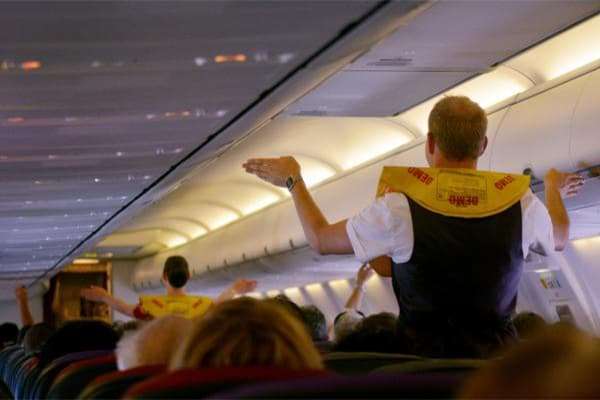Cabin Crew Training & Development
Cabin Crew Training & Development
Cabin Crew Training & Development is a comprehensive program designed to prepare individuals for the role of flight attendants in commercial, charter, or private aviation. The training focuses on safety procedures, emergency response, in-flight service, communication, grooming, and passenger care—ensuring that crew members meet international aviation standards and deliver a world-class flying experience.
- Aircraft safety equipment and location
- Evacuation procedures
- Firefighting onboard (use of extinguishers, smoke hoods)
- Ditching (water evacuation) and life raft management

Learn:
In-flight safety & emergency procedures
In-flight Safety & Emergency Procedures (SEP) are a core component of cabin crew training designed to prepare airline personnel to prevent, manage, and respond to emergency situations during flight operations. These procedures ensure that the cabin crew is equipped with the knowledge, confidence, and practical skills needed to handle everything from minor incidents to life-threatening emergencies while maintaining passenger safety and regulatory compliance.
SEP Training
- Ensure passenger safety and crew preparedness during emergencies
- Minimize panic and ensure effective evacuation if needed
- Enable proper use of emergency equipment onboard
- Comply with international aviation safety regulations (DGCA, ICAO, IATA, FAA, EASA)
- Strengthen decision-making and teamwork during high-stress situations
Passenger service and communication
Passenger Service and Communication refers to the skillset and practices used by airline and airport personnel to assist, engage, and manage passengers throughout their travel journey. It encompasses everything from greeting and guiding travelers to resolving complaints and handling special requests — all while upholding the highest standards of courtesy, safety, and service excellence.
Welcoming and First Impressions
- Greeting passengers with warmth and professionalism
- Offering assistance during check-in, boarding, and arrival
- Maintaining positive body language and tone of voice
- Presenting a calm and courteous demeanor at all times
Airline grooming standards
Airline Grooming Standards refer to the strict appearance and hygiene guidelines set by airlines for their cabin crew, ground staff, and frontline employees. These standards are designed to ensure that all personnel consistently present a neat, professional, and confident image that reflects the airline’s brand, instills passenger trust, and supports a high standard of service.
Airline Grooming Standards
- Reflect the airline’s brand identity and culture
- Promote hygiene and a neat, consistent appearance
- Build passenger trust and confidence in service professionals
- Enhance personal confidence and professional behavior among staff
- Ensure uniformity and discipline across all customer-facing roles
Cabin coordination and teamwork
Cabin Coordination and Teamwork refer to the effective collaboration, communication, and mutual support among cabin crew members during all phases of a flight — from pre-boarding to disembarkation. This coordination is essential to maintain flight safety, operational efficiency, and a consistent passenger service experience, especially in high-pressure or emergency situations.
Cabin Coordination and Teamwork
- Maintain a safe cabin environment through proper procedure adherence
- Ensure efficient task execution with minimal confusion or overlap
- Deliver consistent service standards throughout the cabin
- Foster mutual support, especially during emergencies or irregular operations
- Improve communication and morale among crew members
